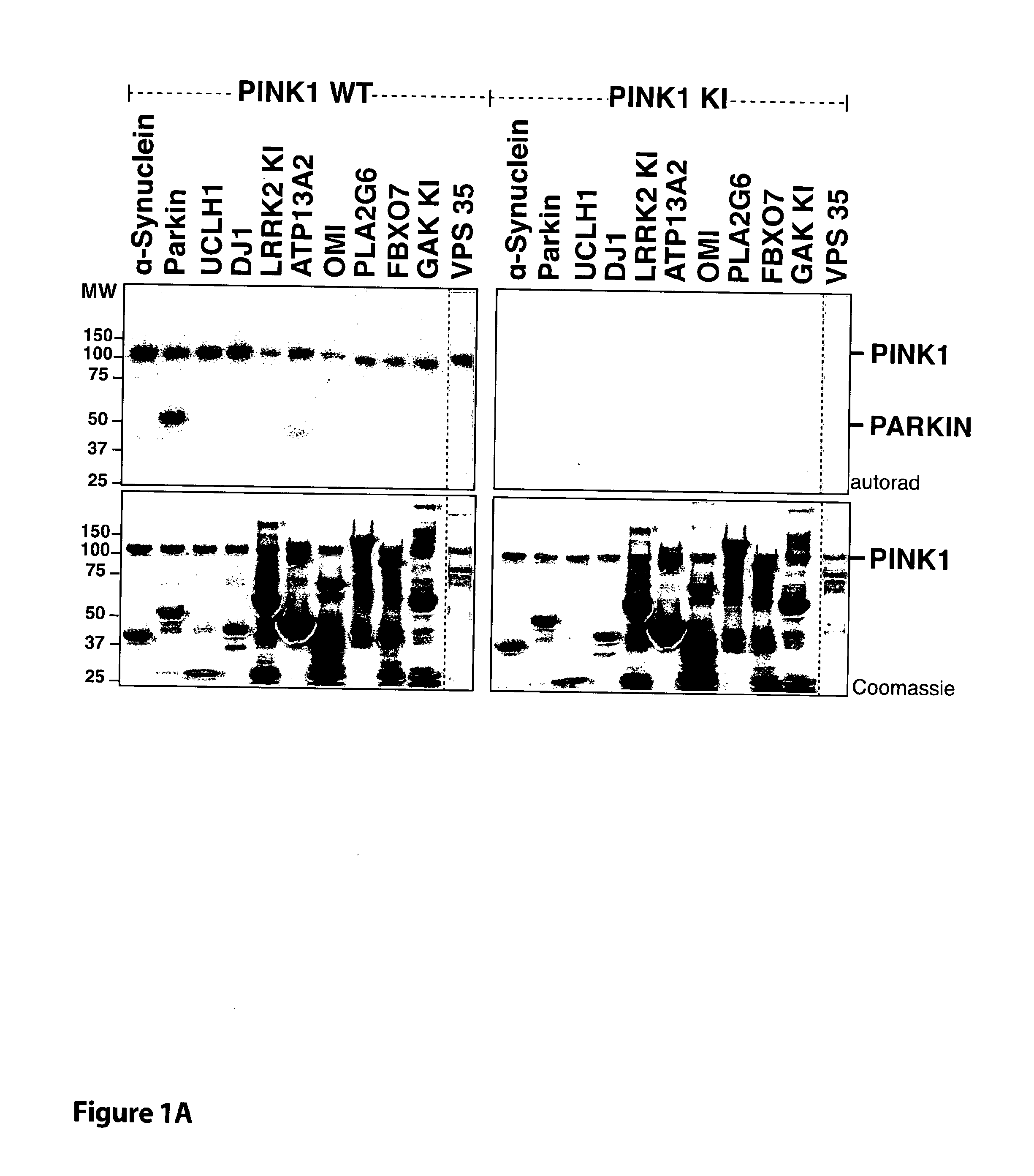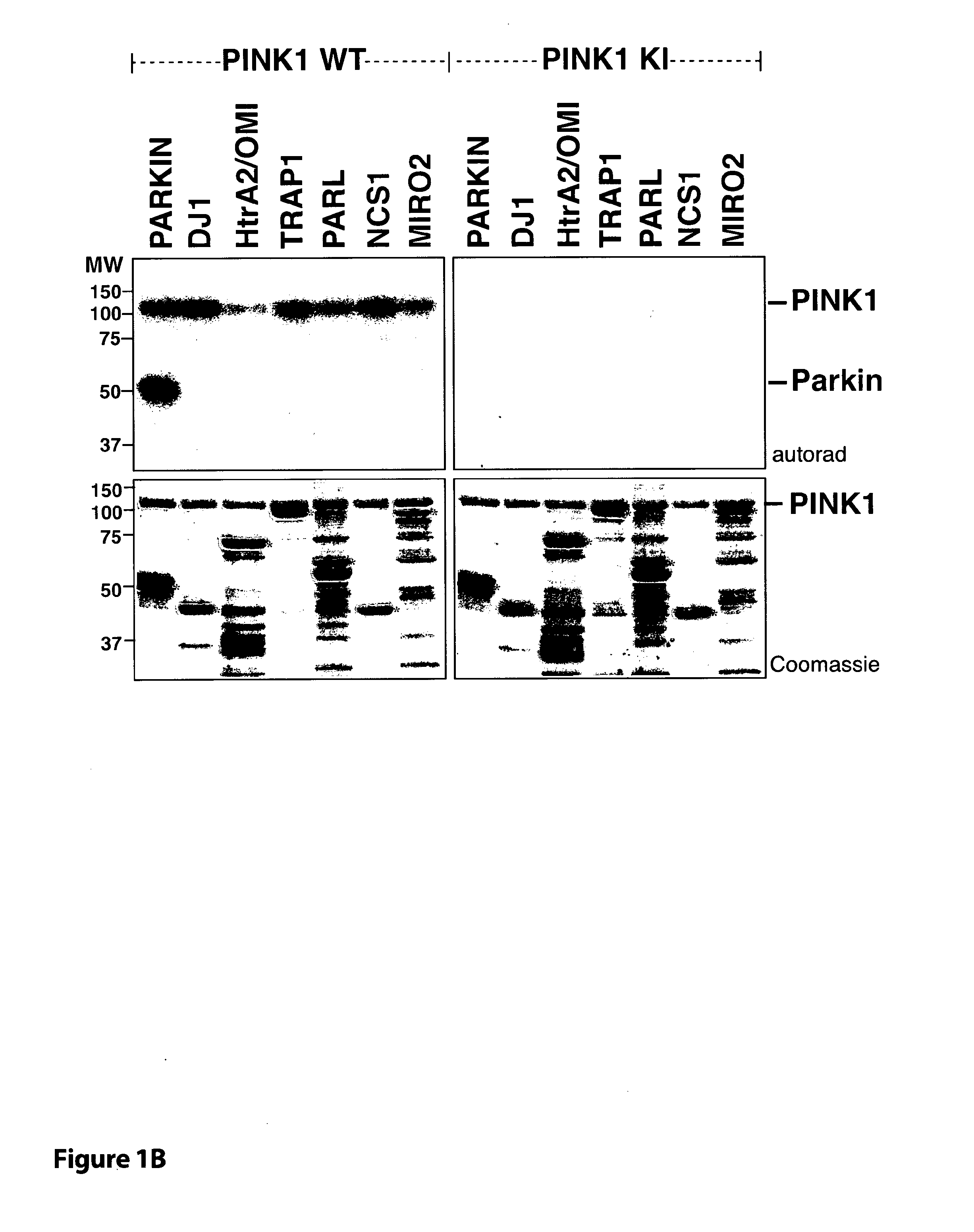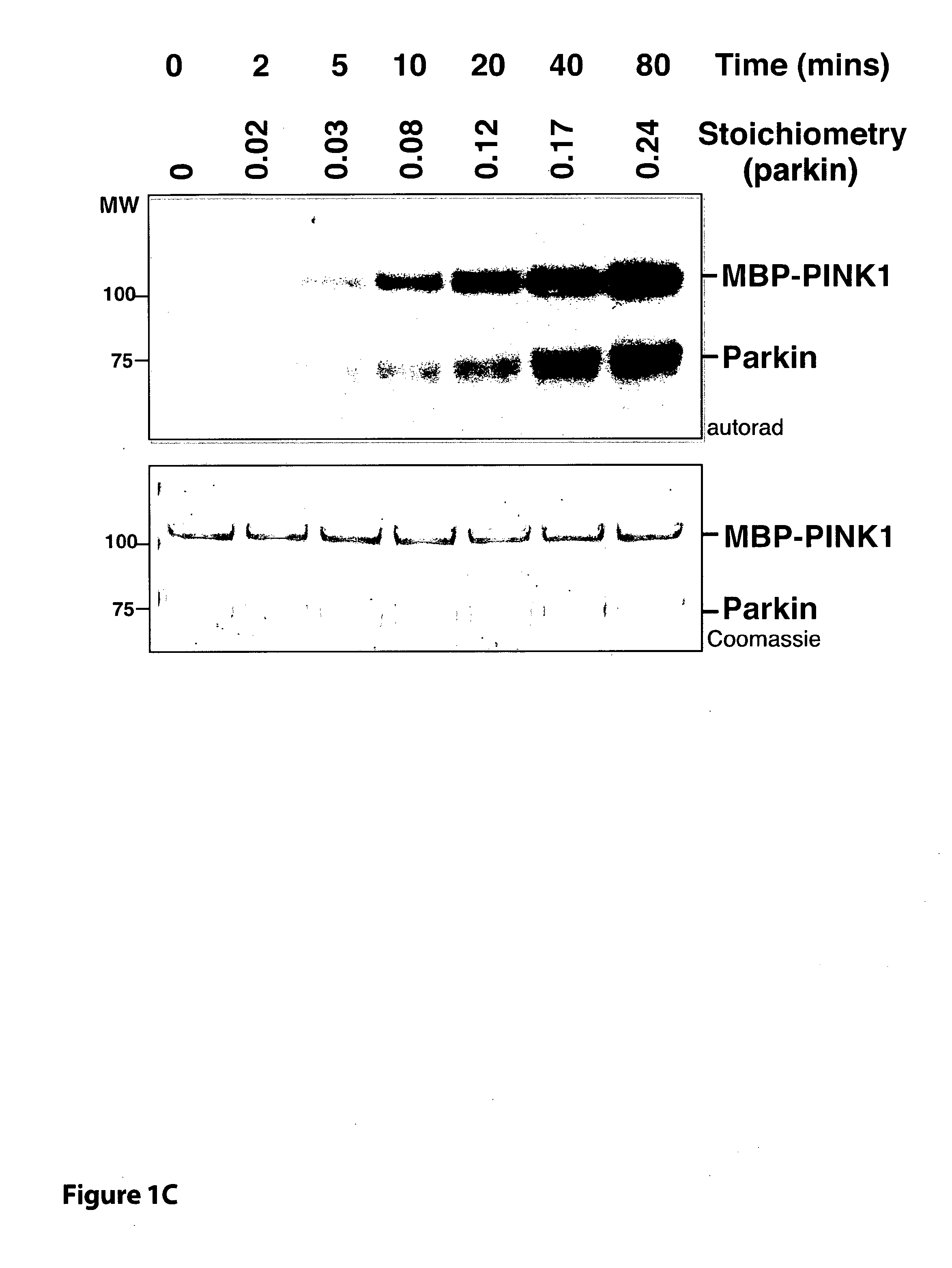Parkinson's Disease Biomarker
a biomarker and parkinson's disease technology, applied in the field of parkinson's disease biomarkers, can solve the problem of limited knowledge on the mechanism by which pink1 kinase activity is regulated
- Summary
- Abstract
- Description
- Claims
- Application Information
AI Technical Summary
Benefits of technology
Problems solved by technology
Method used
Image
Examples
Embodiment Construction
[0037]The present invention will now be further described with reference to the following figures which show:
[0038]FIG. 1 TcPINK1 phosphorylates human parkin at Ser65 in vitro. (A) The indicated Parkinson's disease-linked proteins (1 μM) were incubated with either full-length MBP-fusion of wild type TcPINK1 (1-570) or kinase inactive (KI) TcPINK1 (D359A) (0.5 μg) and [γ-32P] ATP for 30 min. Assays were terminated by addition of SDS loading buffer and separated by SDS-PAGE. Proteins were detected by Colloidal Coomassie blue staining (upper panel) and incorporation of [γ-32P] ATP was detected by autoradiography (lower panel). Similar results were obtained in three independent experiments. Fine dividing lines indicate that reactions were resolved on separate gels. The substrate bands on the Coomassie gel are denoted with a small red asterisk. All substrates were of human sequence and expressed in E. coli unless otherwise indicated. Tags on the substrates used for this experiment were G...
PUM
| Property | Measurement | Unit |
|---|---|---|
| flow rate | aaaaa | aaaaa |
| pH | aaaaa | aaaaa |
| pH | aaaaa | aaaaa |
Abstract
Description
Claims
Application Information
 Login to View More
Login to View More - R&D Engineer
- R&D Manager
- IP Professional
- Industry Leading Data Capabilities
- Powerful AI technology
- Patent DNA Extraction
Browse by: Latest US Patents, China's latest patents, Technical Efficacy Thesaurus, Application Domain, Technology Topic, Popular Technical Reports.
© 2024 PatSnap. All rights reserved.Legal|Privacy policy|Modern Slavery Act Transparency Statement|Sitemap|About US| Contact US: help@patsnap.com










